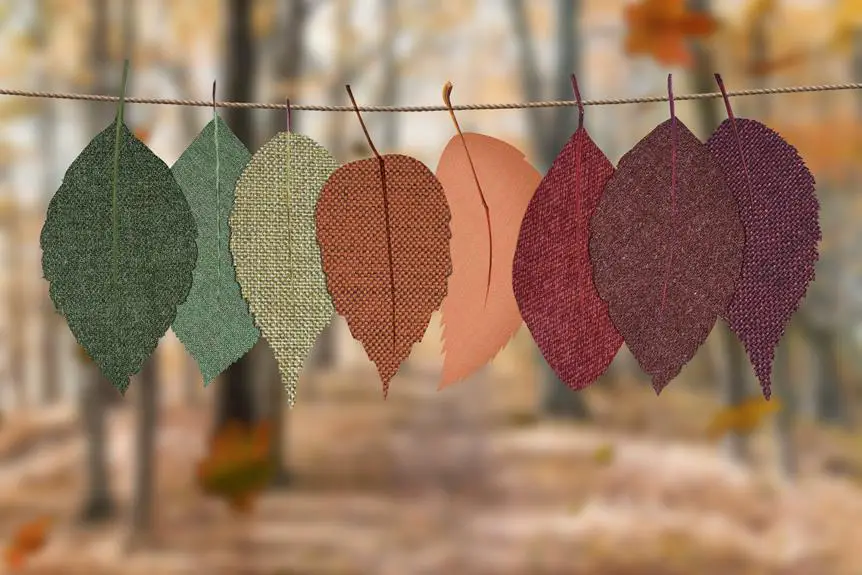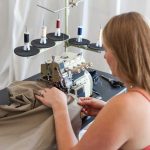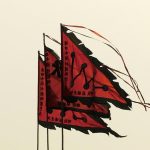If you've ever debated between two luxurious fabrics for your upholstery, let's talk about damask and jacquard.
Both offer intricate patterns, but damask tends to have a subtle sheen while jacquard boasts a more textured look.
Understanding the differences and which fabric might suit your needs better can make all the difference.
Key Takeaways
- Damask originated in Damascus and gained popularity in Europe during the Middle Ages, while jacquard fabric was invented by Joseph Marie Jacquard during the Industrial Revolution.
- Damask fabrics are woven using a special technique on a jacquard loom, while jacquard fabrics are woven on a loom that controls individual warp threads.
- Damask fabrics have a single color warp and weft, while jacquard fabrics can have multiple colors.
- Damask fabrics are known for their durability and smooth texture with a subtle sheen, while jacquard fabrics offer a more intricate and raised texture.
History and Origins
Both damask and jacquard fabrics have rich histories, with each originating from distinct weaving techniques that have been perfected over centuries. Damask, believed to have originated in the ancient city of Damascus, is characterized by its reversible patterns and is often associated with luxury and elegance. Its origins can be traced back to the Byzantine Empire, and it gained popularity in Europe during the Middle Ages.
On the other hand, jacquard fabric, named after its inventor Joseph Marie Jacquard, emerged during the Industrial Revolution. This revolutionary weaving process allowed for intricate patterns to be woven into the fabric with precision, leading to a surge in its popularity and demand.
The evolution of both damask and jacquard fabrics is deeply rooted in their cultural significance and symbolism. Damask has been historically associated with wealth, nobility, and high status, making it a symbol of luxury and sophistication. In contrast, jacquard fabrics, with their intricate designs and versatility, have come to represent innovation and modernity in the world of textile production.
Understanding the origins and evolution of these fabrics provides insight into their enduring appeal and significance in the world of fashion and interior design.
Weaving Techniques
When considering the weaving techniques of damask and jacquard fabrics, you'll notice distinct differences in the method and intricacy of pattern formation. Damask fabrics are woven using a special technique on a jacquard loom, where the pattern is woven into the fabric through the interplay of the warp and weft threads. On the other hand, jacquard fabrics are woven on a loom that controls individual warp threads, allowing for intricate and complex patterns to be created with great precision.
Key Differences in Weaving Techniques:
- Warp and Weft: Damask fabrics typically have a single color warp and weft, creating a tone-on-tone effect, while jacquard fabrics can have multiple colors in both the warp and weft, leading to intricate and colorful designs.
- Loom Technology: Damask weaving involves a traditional jacquard loom with punched cards, while jacquard weaving uses a modern computerized jacquard loom, providing greater flexibility in pattern design and execution.
- Pattern Complexity: Damask patterns are usually reversible and tone-on-tone, whereas jacquard patterns can be highly detailed and multicolored, offering a wider range of design possibilities.
Understanding these weaving techniques can help you appreciate the craftsmanship and artistry behind damask and jacquard fabrics.
Design and Patterns
To appreciate the differences between damask and jacquard fabrics in terms of design and patterns, examine the intricate motifs and color variations in each fabric type. Damask fabrics are known for their elaborate designs, often featuring floral patterns, intricate geometric shapes, and a subtle sheen created by the light-reflecting properties of the fabric. On the other hand, jacquard fabrics are characterized by their raised patterns, which are woven directly into the fabric, allowing for intricate designs with a textured feel. Both damask and jacquard fabrics offer a wide range of design variations, from classic to modern, making them suitable for various aesthetic preferences and interior design styles. The pattern intricacy of damask and jacquard fabrics is a result of the weaving techniques used to create them, and it influences the overall look and feel of the fabric.
| Design Variations | Pattern Intricacy | Aesthetic Flexibility |
|---|---|---|
| Damask | High | Classic, Elegant |
| Jacquard | High | Modern, Textured |
Fabric Characteristics
When it comes to choosing between damask and jacquard fabrics, understanding their fabric characteristics is crucial. You'll want to consider factors like durability and texture, as well as the weaving techniques used for each fabric.
Additionally, the variations in pattern and design will play a significant role in your decision-making process.
Durability and Texture
Durability and texture are key factors to consider when choosing between damask and jacquard fabrics for your upholstery needs. Both fabrics have their own unique characteristics that affect their durability and texture.
Here's what you need to know:
- Durability comparison: Damask fabrics are known for their durability due to their tight weave, making them resistant to wear and tear. On the other hand, jacquard fabrics are also durable, but they may not be as resilient as damask due to their looser weave.
- Textural differences: Damask fabrics have a smooth texture with a subtle sheen, adding a touch of elegance to any upholstery. Meanwhile, jacquard fabrics offer a more intricate and raised texture, often featuring intricate patterns and designs.
Understanding the durability and texture differences between damask and jacquard fabrics can help you make an informed decision based on your specific upholstery needs.
Weaving Techniques Comparison
Your understanding of the weaving techniques employed in damask and jacquard fabrics is crucial in discerning their fabric characteristics. Damask fabrics are traditionally woven using a single color and are known for their reversible patterns, created through a combination of satin and sateen weaves. This intricate weaving technique results in a smooth, lustrous surface with a matte reverse.
On the other hand, jacquard fabrics are woven using a Jacquard loom, allowing for complex patterns and intricate designs. Unlike damask, jacquard fabrics can incorporate multiple colors and various yarn types in the fabric construction, offering a wide range of design possibilities. Additionally, jacquard fabrics often have a raised pattern, giving them a textured feel.
Both fabrics can be composed of silk, cotton, or synthetic materials, with the weaving technique playing a significant role in determining their unique characteristics.
Pattern and Design Variations
The pattern and design variations in damask and jacquard fabrics significantly influence their fabric characteristics.
When it comes to damask, you'll find a wide range of color and texture variations, from rich, deep hues to subtle, muted tones, making it suitable for both traditional and modern designs.
On the other hand, jacquard fabrics offer a diverse selection of floral and geometric patterns, ranging from intricate, detailed motifs to simple, elegant designs.
These patterns and designs not only contribute to the overall aesthetic appeal but also affect the fabric's drape, weight, and durability.
Whether you prefer the timeless elegance of damask or the intricate patterns of jacquard, understanding these variations can help you make an informed choice for your specific project.
Durability and Maintenance
When it comes to durability, damask fabrics are known for their strength and resilience, making them a great choice for long-lasting upholstery or drapery.
On the other hand, jacquard fabrics typically require less maintenance due to their intricate patterns and designs, making them easier to conceal wear and tear.
Each fabric has its own unique qualities that cater to different needs, so considering your specific use and care preferences is crucial in making the right choice for your home decor.
Durability of Damask
For durability and maintenance, damask fabric offers a reliable choice for your home furnishings. When it comes to durability comparison, damask fabric holds its own against other fabrics, thanks to its tight weave and strong fibers. The fabric texture of damask also contributes to its durability, as the tight weave creates a sturdy and resilient material that can withstand everyday wear and tear.
Additionally, the maintenance of damask fabric is relatively easy, requiring simple care routines to keep it looking fresh and vibrant for years to come. With proper care, damask fabric can maintain its durability and beauty, making it a practical and long-lasting choice for upholstery, draperies, and other home decor items.
Maintenance of Jacquard
Regularly vacuum and spot clean your Jacquard fabric to maintain its durability and prolong its lifespan. Use a handheld vacuum with a soft brush attachment to gently remove dust and debris from the fabric's surface.
For spot cleaning, blot the stained area with a mild detergent and water, then pat it dry with a clean cloth. Avoid using harsh chemicals or scrubbing vigorously, as this can damage the delicate weave of the Jacquard fabric.
In case of spills, attend to them promptly to prevent stains from setting in.
To preserve the fabric's color, keep it out of direct sunlight and rotate cushions and pillows regularly to ensure even exposure.
Suitable Applications
You can use damask and jacquard fabrics for a wide range of applications, including upholstery, drapery, and table linens. Both fabrics are known for their versatility and can add an elegant touch to various settings.
Here's how you can best utilize these fabrics:
- Upholstery: Damask and jacquard fabrics are excellent choices for upholstering furniture such as sofas, chairs, and ottomans. Their intricate designs and durable nature make them well-suited for adding a touch of sophistication to your living space.
- Drapery: These fabrics work wonderfully for creating luxurious draperies and curtains. The intricate patterns and sheen of damask and jacquard fabrics can elevate the ambiance of any room, whether it's a formal dining room or a cozy bedroom.
- Table Linens: When it comes to tablecloths, napkins, and placemats, both damask and jacquard fabrics offer an air of refinement. Their elegant designs and durability make them ideal for special occasions or everyday dining.
Cost and Accessibility
When shopping for damask and jacquard fabrics, consider the cost and accessibility of each option to make an informed decision about which best suits your needs. Both damask and jacquard fabrics offer a luxurious look and feel, but there are differences in their cost and availability that can impact your decision.
Here's a cost comparison and availability analysis of damask and jacquard fabrics:
| Aspect | Damask Fabric | Jacquard Fabric |
|---|---|---|
| Cost | Generally more affordable due to simpler weaving techniques | Can be more expensive due to intricate weaving processes |
| Availability | Widely available in various designs and colors | Available in a wide range of designs but may be less common |
Damask fabrics are often more cost-effective than jacquard fabrics, making them a great option for those looking for a luxurious feel without breaking the bank. Additionally, damask fabrics are widely accessible in various designs and colors. On the other hand, jacquard fabrics, while more expensive, offer intricate designs and are also available in a wide range of options but may be less common in some locations. Consider these factors when making your decision based on your budget and the availability of your desired fabric.
Comparing Aesthetics
The visual appeal of damask and jacquard fabrics differs significantly, influencing the overall aesthetic of your chosen textile. When considering the aesthetics comparison, it's crucial to understand the visual impact each fabric can have on your decor or attire.
- Pattern Complexity: Damask fabrics often feature intricate patterns with a matte and glossy effect, creating a luxurious and elegant look. On the other hand, jacquard fabrics can showcase a wide range of patterns, from simple to highly detailed designs, offering versatility in visual appeal.
- Texture and Depth: Damask fabrics tend to have a more pronounced design due to their weaving technique, resulting in a raised effect that adds depth and dimension to the fabric. In contrast, jacquard fabrics can vary in texture, offering a spectrum of tactile experiences, from smooth and sleek to textured and multi-dimensional.
- Color Reflectivity: Damask fabrics are known for their ability to reflect light differently, creating a captivating interplay of light and shadow. Jacquard fabrics, depending on the yarns used, can also achieve distinct reflective qualities, enhancing the overall visual impact.
Understanding the nuances of aesthetics in damask and jacquard fabrics empowers you to make an informed decision based on the specific visual impact you want to achieve.
Frequently Asked Questions
Can Damask and Jacquard Fabrics Be Used Interchangeably in the Same Project?
Yes, damask and jacquard fabrics can be used interchangeably in the same project. Their versatility allows for seamless integration into various projects, offering a wide range of design options and fabric interchangeability.
Are There Any Specific Cultural or Regional Associations With Either Damask or Jacquard Fabrics?
Cultural associations and regional influences play a significant role in the use of damask and jacquard fabrics. Understanding these connections can enhance your mastery of these textiles and provide insight into their historical and contemporary relevance.
Are There Any Environmental or Sustainability Considerations When Choosing Between Damask and Jacquard Fabrics?
When picking between damask and jacquard fabrics, it's crucial to consider environmental impact, sustainable production, and ethical sourcing. Look for eco-friendly practices that align with regional traditions, and prioritize fabric combinations that require minimal care maintenance.
Can Damask and Jacquard Fabrics Be Easily Combined With Other Types of Fabrics in a Single Project?
You can easily combine damask and jacquard fabrics with other types in a single project. These luxurious textiles offer versatility, allowing for endless creative possibilities. Mixing textiles can elevate your designs, adding depth and sophistication.
Are There Any Specific Care Instructions or Best Practices for Maintaining the Appearance of Damask or Jacquard Fabrics Over Time?
To maintain the appearance and longevity of your damask or jacquard fabrics, follow specific care instructions. Implement best practices for fabric maintenance, such as gentle washing, avoiding direct sunlight, and using appropriate cleaning products to preserve their beauty over time.
- Jaclyn Smith Fabric Coconut: a Review of This Rayon/Polyester Blend - June 29, 2025
- Jaclyn Smith Fabric Coconut: a Review of This Rayon/Polyester Blend - June 29, 2025
- How to Get Coconut Oil off Fabric Without Washing - June 29, 2025







